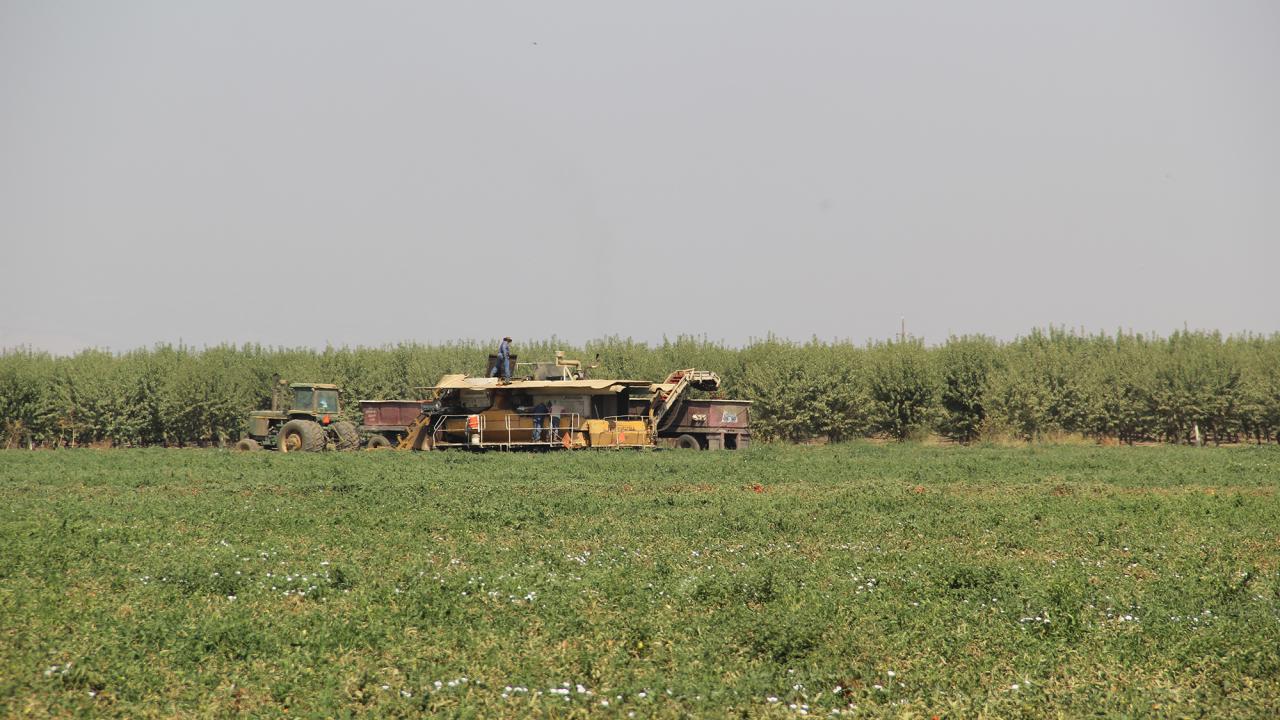
Life of a WCAHS Student Researcher: Heat Illness Study
Note: Eddie and his co-workers have been working throughout the summer season on CA farms to better understand how to prevent heat illness associated with farm work. Data collected includes the internal temperature of participants as they work, how much water they drink, and on-site weather conditions.
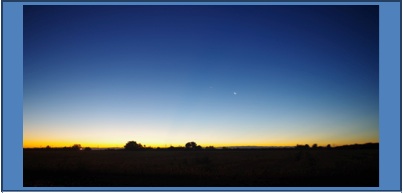
We usually work Monday-Thursday. On Monday, we drive down from the Ag Center to whatever farm we will be working with for that week. Mondays are not as intense as the rest of the days since all we do is recruit participants for that week. However, beginning on Tuesday, we wake up before dawn to be at the farm 30 minutes before the workers arrive. So, we basically have to put up with beautiful sunrises each day we work.
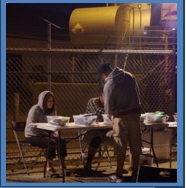
We usually set up in an open space or in a dirt road adjacent to the farm. Sometimes, we’re lucky and the farmer will let us use their office for the pre- and post-shifts. Jose, Melissa, and Carlos set up at the farm and wait for the first participants to show up.
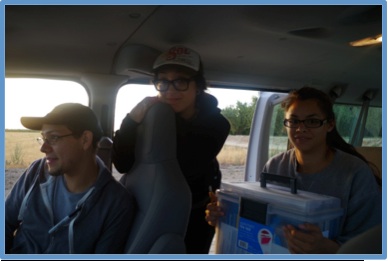
Javier, Maria, and Leslie patiently wait inside one of the vans after finishing the pre-shift session. During this time, others may review blood exam results or set up the weather equipment.
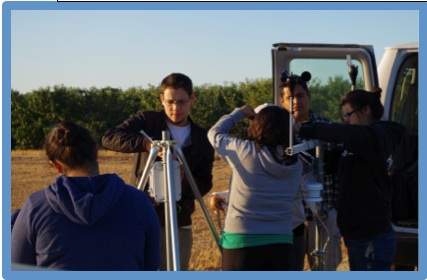
Alondra, Javier, Melissa, Maria, Carlos, and Leslie set up the weather equipment. After it is set up, we all get breakfast, and the 8 crew split up into AM and PM shifts.
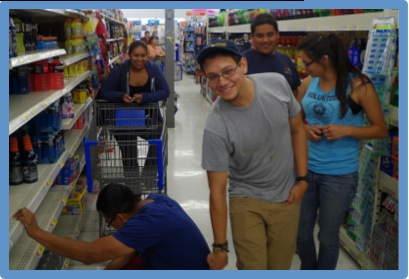
Alondra, Jose, Javier, Carlos, and Leslie shopping for supplies at Walmart for water and Gatorade. These supplies are for ourselves and offered to participants during post-shift.
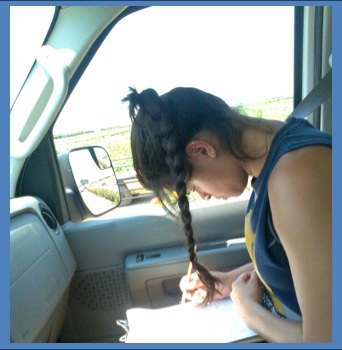
The majority of our workday consists of observing the participants. We take notes on their activities and how many times they drink fluids. Leslie is observing from one of our vans. I prefer sitting outside under shade, but when there is no shade and it is too hot, we watch from the vans.
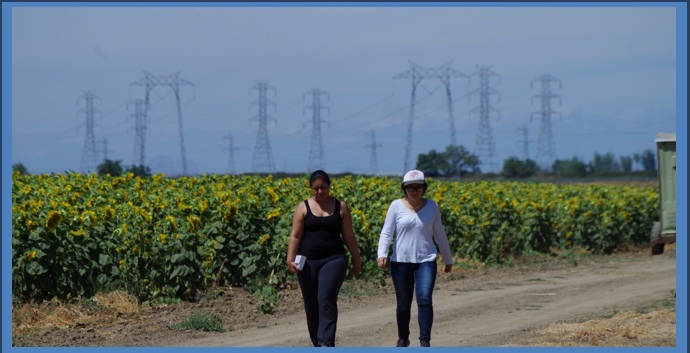
Sometimes participants are not visible from the van and move around, so we have to follow them wherever they go to get our observations. Alondra and Maria walk down the edge of a sunflower field at a farm in Yolo County.
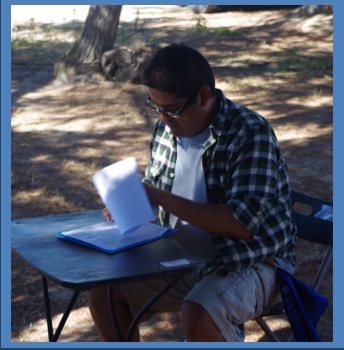
During the post-shift, we basically do everything that we did in the morning except the equipment is removed and the post-shift questionnaire is longer.Carlos reviews the participant folder making sure everything is checked off and the participant may receive their compensation.
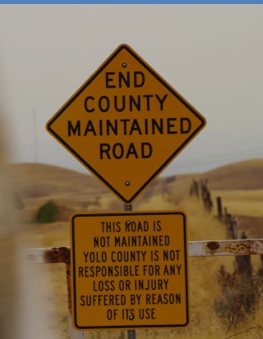
To me, this sign summarizes the need for the California Heat Illness Prevention study and its significance. California is the 8th largest economy in the world, and agriculture is by far the largest industry in California. All too often, farmworkers are taken for granted and pushed aside. They are labeled as “aliens” in a state that is 7.5% composed of illegal immigrants. It’s about time someone took responsibility for their “losses or injuries”.
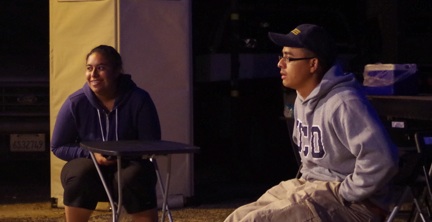
Our supervisors, Alondra and Jose, organize participant recruitment and keep us on our toes!
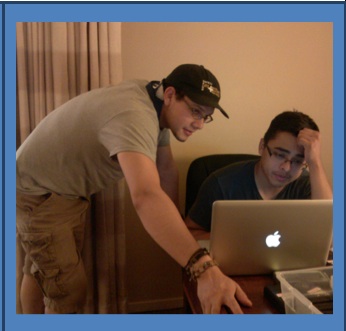
The level of work and hours varies for each farm. I’ve sometimes had to work 16 hour days, most commonly on the last day of the week when we drive back to Davis after working all day long. This is great for me since I get to clock in so many hours but can be super tiring! Javier knocks out on his hotel bed after a hard day’s work
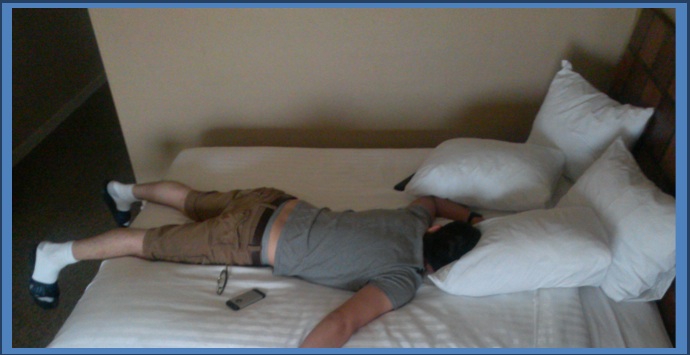
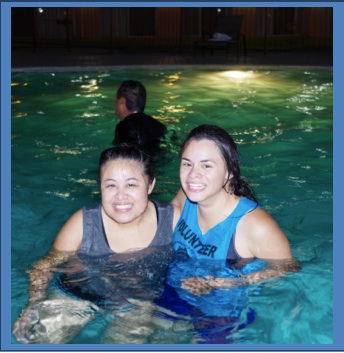
For Melissa and Leslie, nothing beats a refreshing swim after basking in the hot sun for 10 hours. WCAHS always tries to find a hotel with a pool for us. Sometimes the location of the farm makes that impossible, but when the hotel does have a pool, you can bet we dive right in!
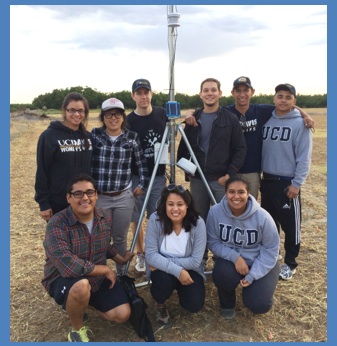
Our team from Summer 2014: (Top row left to right): Leslie, Maria, Johnny, Javier, Eduardo, and Jose; (Bottom row left to right): Carlos, Melissa, and Alondra.
